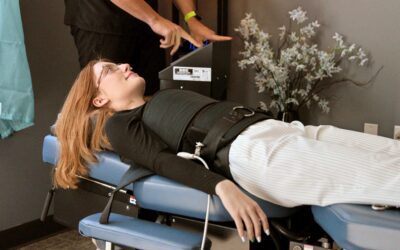Headaches often come when we least expect them and they are always are unwelcome. The most common method in the United States to treat headaches is with over-the-counter pain relievers and hope that it works to relieve your pain.
These over-the-counter pain relievers may help some mild headaches, but leave chronic headache sufferers without any pain relief at all. Over-the-counter pain relievers are associated with liver and kidney damage along with other serious side effects if too many are taken for an extended period of time.
The good news is that chiropractic care offers many drug-free treatment options to relieve those debilitating headaches.
What Kind of Headaches Do You Experience?
The three most common headache types are Tension, Cluster, and Migraines.
Tension Headache – A tension headache is generally a diffuse, mild to moderate pain in your head that’s often described as feeling like a tight band around your head. A tension-type headache is the most common type of headache, and yet its causes aren’t well understood.
Cluster Headaches – Cluster headaches usually occur in patterns or clusters. Bouts of frequent attacks, known as cluster periods, may last from weeks to months, usually followed by long periods of relief or remission. During remission, these attacks may stop for months or years. Pain is severe on one side of the head, accompanied by symptoms such as nasal discharge, or red or tearing eyes.
Migraine Headaches – Migraine headaches can be of varying intensity, often accompanied by nausea and sensitivity to light and sound. Migraine headaches are sometimes preceded by warning symptoms. Triggers can include hormonal changes, weather patterns, certain foods and drinks, stress, or exercise. Migraine headaches can cause throbbing in one particular area that can vary in intensity. Nausea and sensitivity to light and sound are also common symptoms.
How Can Your Chiropractor Treat Headaches?
Several chiropractic treatments for headaches are available and can include the following:
Spinal Manipulation – Spinal manipulation relieves pressure on your joints, realigns your spine, improves blood flow, and helps relax tight muscles. Your chiropractor uses their hands or an activator to apply quick, forceful pressure to the vertebrae. Spinal manipulation is particularly helpful if nerve irritation triggers your migraines or cluster headaches. Manipulation relieves pressure on your nerves, easing your pain and reducing the frequency of your headaches.
Spinal Mobilization – Spinal mobilization involves gentle, hands-on pressure that stretches your spine, improves joint function, and helps ease tension in the muscles between the vertebrae. Since tense muscles can be an issue no matter what type of headache you experience, mobilization can be very effective.
Massage Therapy – Massage therapy is often included in treatment plans for headaches. The therapy loosens tight muscles, improves range of motion, increases blood flow, and may help reduce the frequency of your headaches. Regular massages also reduce stress, which can be a factor if you get tension headaches.
Flexion-Distraction Therapy – This therapy is performed on a segmented table that moves or drops as your chiropractor gently manipulates your vertebrae. Flexion-distraction therapy reduces stiffness, improves range of motion in your back and neck, and may even help decrease the number of headaches you get every month.
Your chiropractic treatment plan might include a few other types of therapy, including ice and heat therapy, ultrasound treatment, or electrotherapy. Improving your posture and strengthening the muscles that support your head and neck may also be helpful. Your chiropractor can recommend exercises, make suggestions that will help you improve your posture, and even provide advice about a healthy diet.
Is Chiropractic Treatment Effective For Headaches?
In a case study that was published in Global Advances in Health and Medicine, researchers discussed the case of a 31-year-old patient whose migraines become chronic after two pregnancies. After chiropractic treatment, she experienced fewer migraines. During the 10th month, she reported no headaches during the entire month.
Another case study published in the Journal of Family Medicine and Primary Care examined the case of a 44-year old woman who suffered from daily headaches that didn’t respond to pain medication. During her treatment, spinal manipulation, ultrasound, and other therapies were utilized. After three months of treatment, her headache pain began to subside. The pain was completely eliminated by six months.
Are you tired of living with headaches or migraine pain? We can help relieve your symptoms naturally. Contact us to schedule an appointment.


